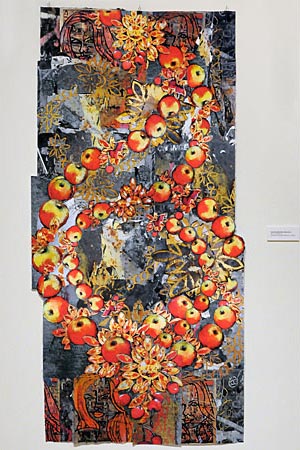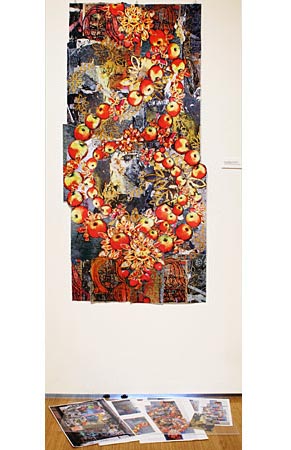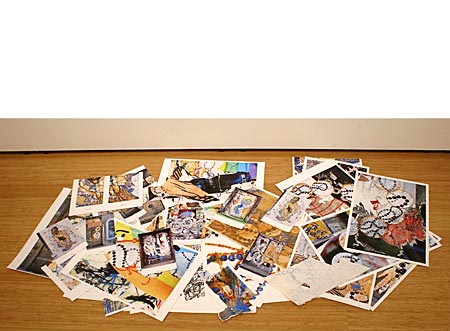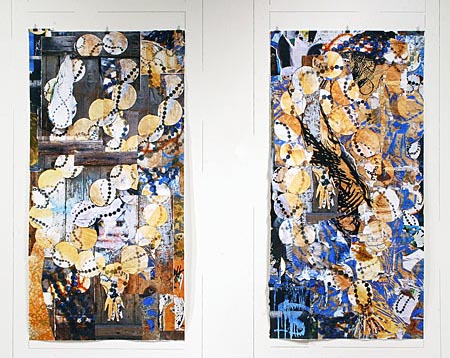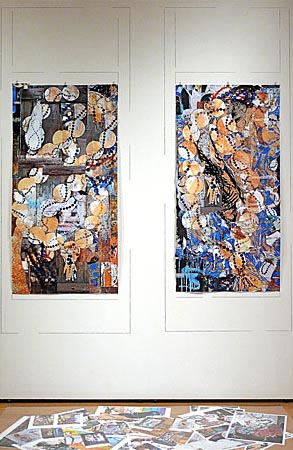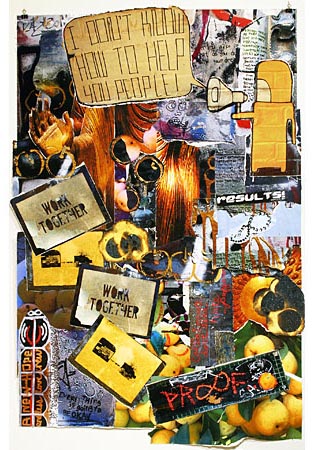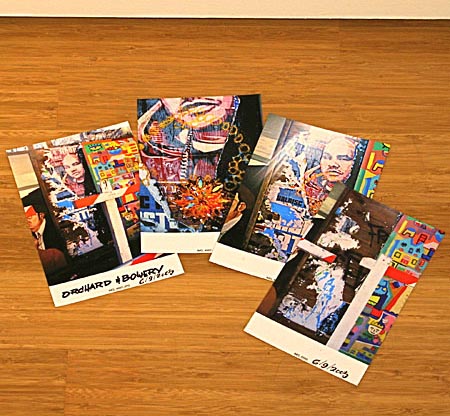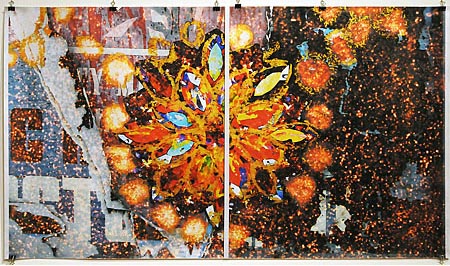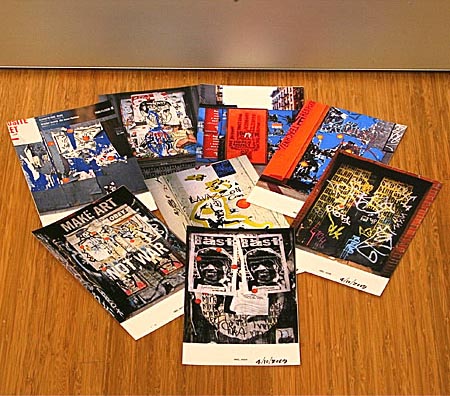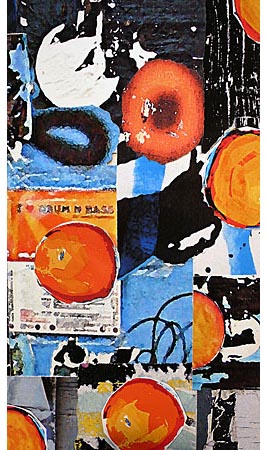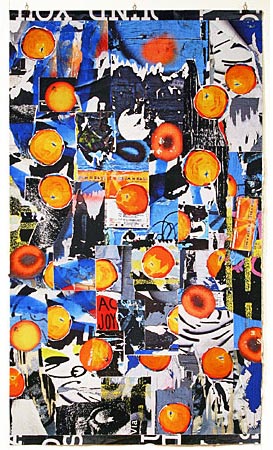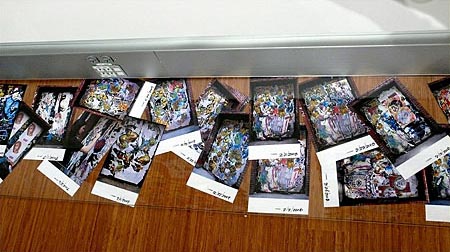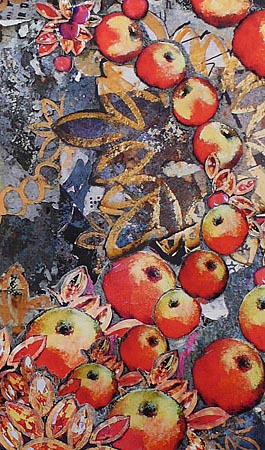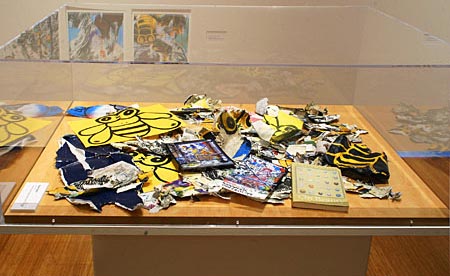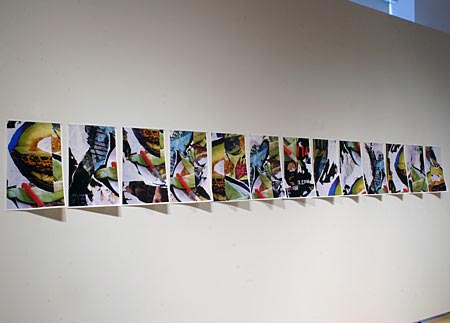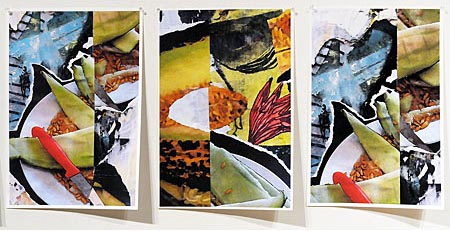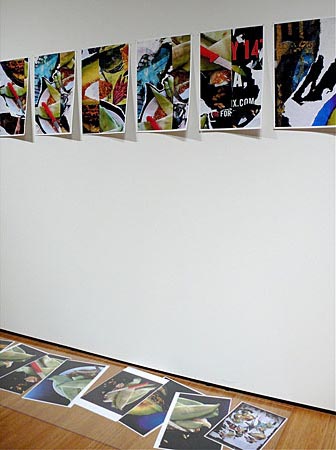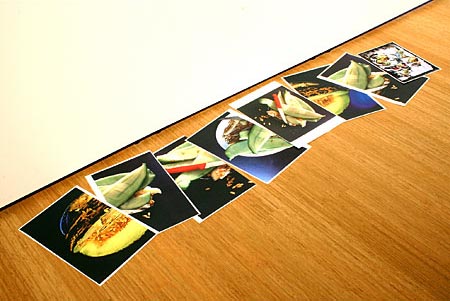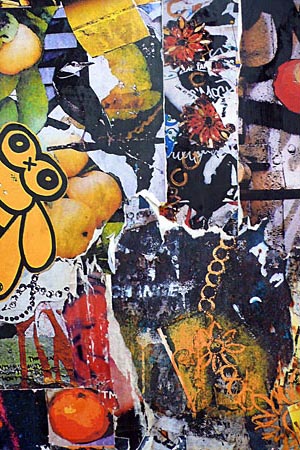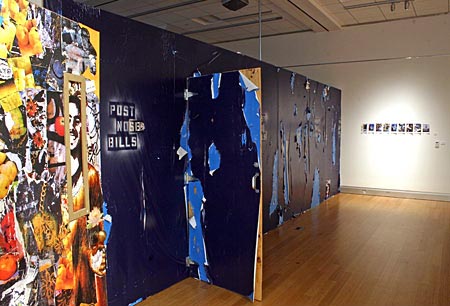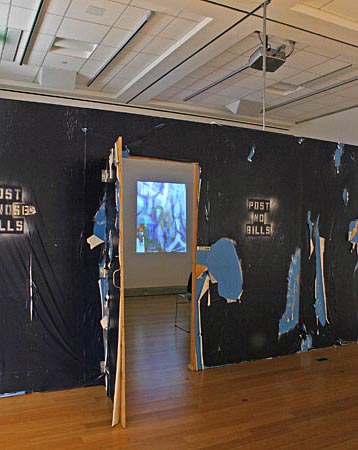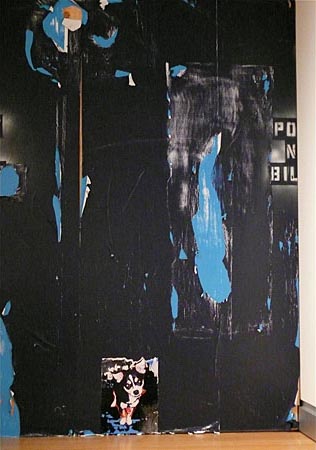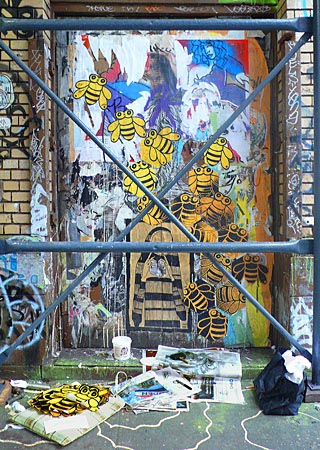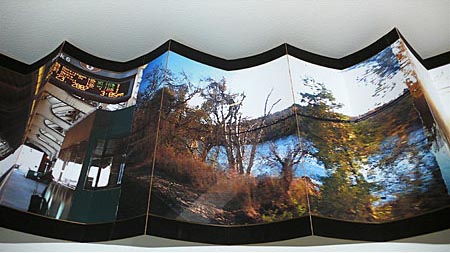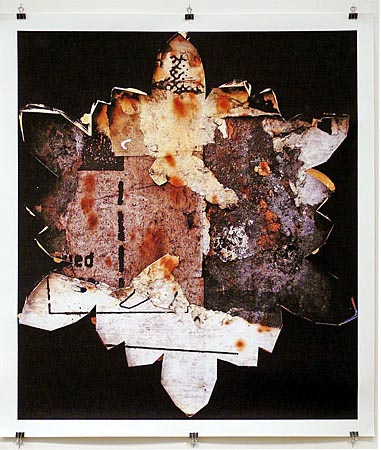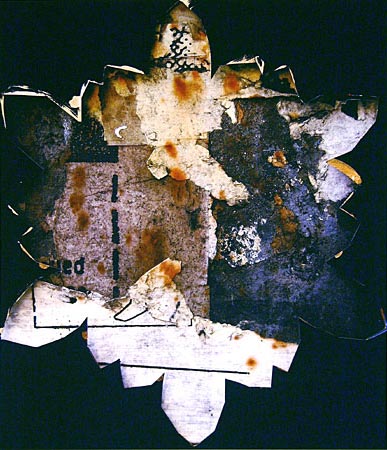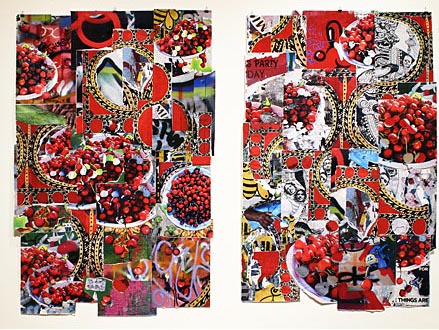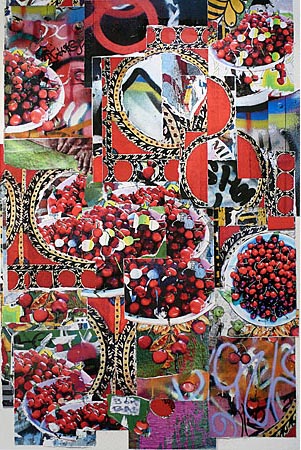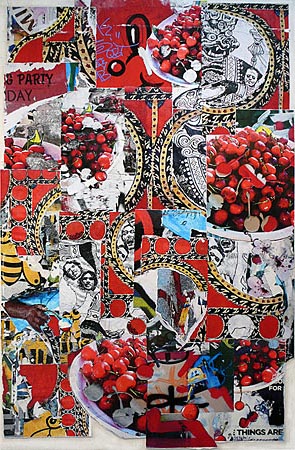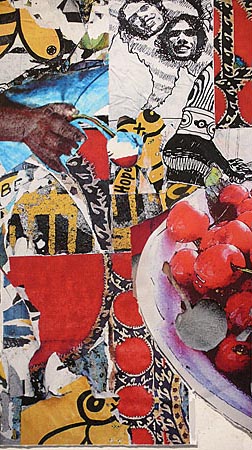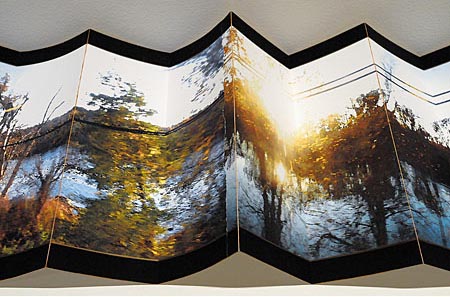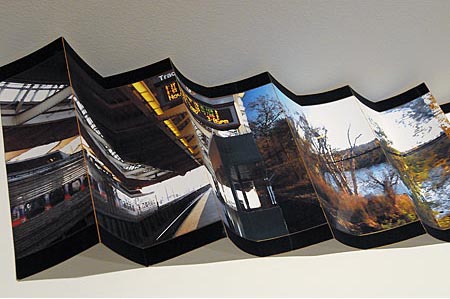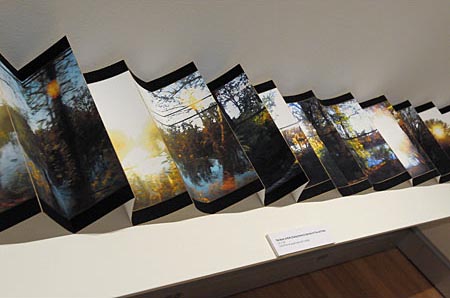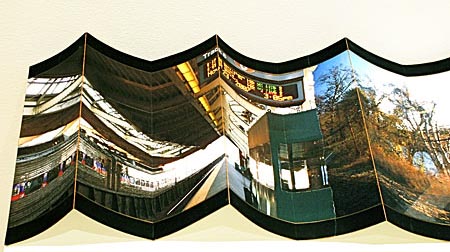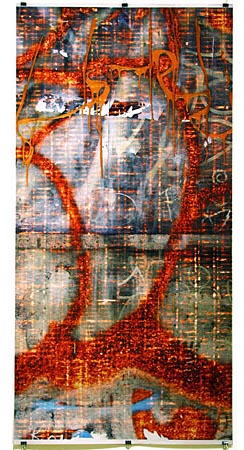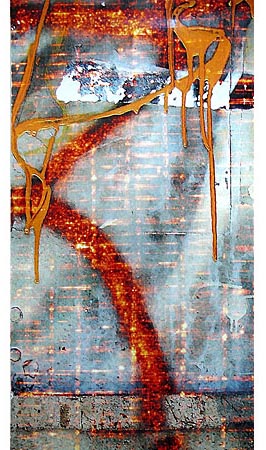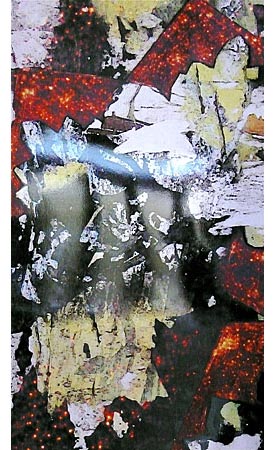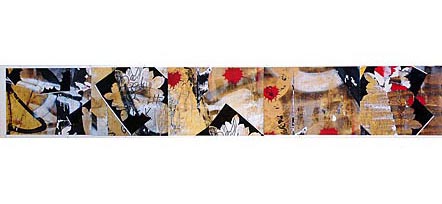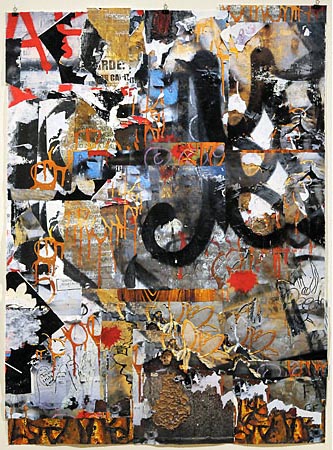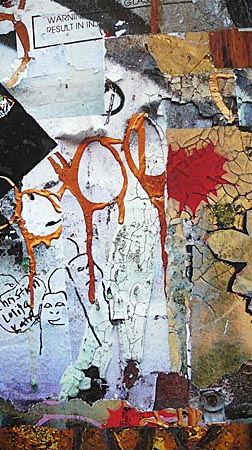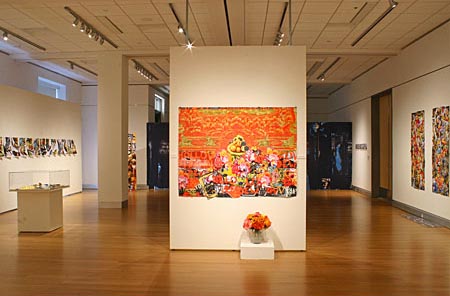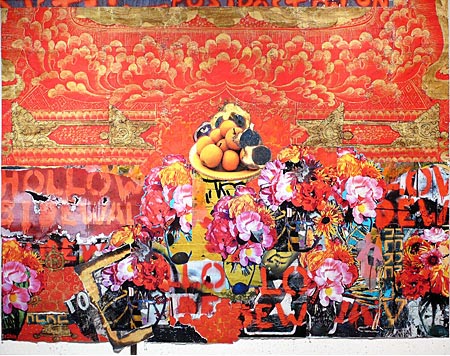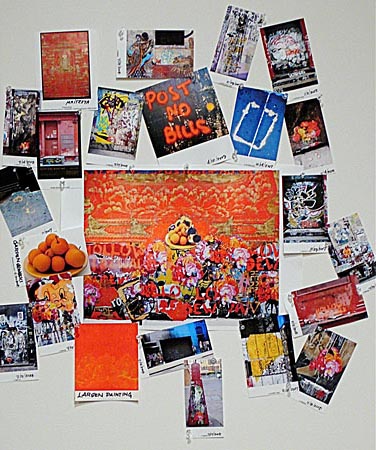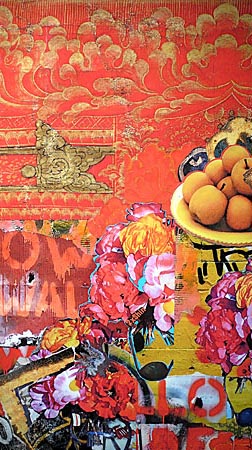September 4- October 20, 2008
CURATOR'S STATEMENT
by Donna Larsen
I have always been interested in signs as vehicles of reassurance, and beauty as a form of solace. This body of work was begun during my sabbatical four years ago and reflects my ongoing interest in street art as a “sign” of the times. The first part is a series of ongoing wheat paste* site-specific pieces done in New York City on sanctioned sites**. The second part is a reformatted version of the NYC work made from photo close-ups and inspired by classic Oriental art forms. In these new visuals, I am not interested in reproducing one site, but rather in playing with space and time by combining separate sites into a new whole.
During the last fifteen years I have been photographing street art with an emphasis on wheat paste work. I became interested in the way new pieces were pasted over other work and then broken down by the elements and the tearing, or “ripping off,” caused by foot traffic. I began to see an intrinsic beauty in the multiple postings and their consequential disintegrations. I found myself looking into these chaotic fields for signs of reassurance. However, most of what I saw on the streets was edgy and sometimes bleak.
At a certain point, I went from being an observer to a participant in this form of expression. I decided to combine my interests: the grittiness of street art and the hope for a sign with the grace of oriental art. Each time I went to NYC, I visited the Metropolitan Museum of Art, specifically the Oriental sections with their beautiful images of beneficence—the Buddha and the bodhisattvas, as well as the Japanese scrolls and screens. My work is based on Buddhist ideas of non-separateness, or compassion.
I set up parameters for the work I wanted to do. I didn’t want to blanket the pieces underneath as most wheat paste artists do, but rather to use separate elements that worked into and around what was already on the surface to create a new image. I wanted all of the images to come from my life, and so my 60’s collection of rhinestone pins became the jewels of the Bodhisattvas; the oranges in my trees became symbols of joy; cherries from a tree in my garden became a gift of delight; the prayer beads came from drawings of pearl necklaces; a branch from my olive trees became a symbol of the desire for peace; a suzani I owned became an enso that encircled what was present on the wall; the bees, from an 8x11 child’s kite bought in Tokyo four years ago, became a sign of hope. Bright flowers from the dollar store became a question of beauty’s reality.
I often work on the same site over time, as in #12 Wooster Street and the Wooster Collective. Much of the work has been ripped off or worked over. In most cases sites have disappeared as buildings have been renovated or torn down. Some pieces were photographed by others and posted on the web. Whatever has happened is not really a concern: I see the work simply as an opportunity to give an unexpected visual gift. It is my wish that in seeing these sites, the viewer can sense the possibility of beauty in unexpected places.
It was a pleasure to have a young man come up to me while I was working at #12 Wooster and say that he had followed my work. He understood. The person who added a beautiful small bird understood. The person who took an orange, and then spray-painted an image of an orange where the original had been, understood too. They found their sign, and left one in return.
*Wheat paste work is printed on paper and adhered to a surface using a paste made from cooked starch (wheat or rice flour) and water.
** “Sanctioned Sites” refers to those sites on which permission was given to local artists to work. Such sites are often buildings scheduled for renovation or demolition. In other situations, art organizations encourage wheat paste work. Sometimes private property owners, such as one on Wooster, provide sites for artists to use.

